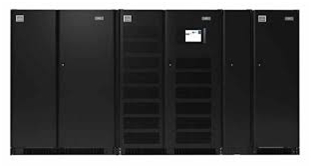Home › Electrical Engineering Forum › General Discussion › Deciding on a static UPS for your data center – an expert’s advice
- This topic has 0 replies, 1 voice, and was last updated 9 years, 10 months ago by
admin.
-
AuthorPosts
-
2015/04/20 at 10:23 am #11247
admin
Keymaster
Here’s a testimony that a professional from Boston, USA sent us two weeks ago. Eric S. wanted give you advices about static UPS, that’s why he wrote this article based on his experience.You want to share you experience as well? You can send us a mail, we’ll be glad to publish it on the blog!
Introduction
Taking a decision on the power requirements of a static UPS for your data center, can only be made after taking into consideration the various factors affecting it.Owing to my experience in this field as a qualified UPS installation and maintenance expert, I can tell you that, one cannot choose the power size of a static UPS for a data center, solely depending on the power distribution scheme.
In fact, I strongly consider taking the following general and critical elements into consideration before you take a final decision:
General Parameters
In order to buy an efficient and accurately sized static UPS, one should know:
- At least two of these load parameters: power factor, active power and apparent power
- Power supply load type (no. of phases, voltage and frequency)
- Power supply mains type (no. of phases, voltage and frequency)
- Coincidence factor of the load
- Backup time required
You need to know and understand all the above parameters before you opt for a static UPS, especially for IT services. If you are unaware, or not able to determine these factors, I recommend that you take the help of a professional, as they are vital for choosing the best UPS that suits your purpose.
Now, let me explain the critical parameters that play a vital role in choosing the best UPS which can be determined by your electrical staff or hired professionals.
Critical Parameters
Equipment Load
This is the most important factor that should be taken into consideration while opting for a static UPS.
All loads, and specifically IT equipment loads, are governed by switching gears and are by large influenced by the electric supply phases and waveforms. It is a well known fact that switching power supplies only recognize electric supplies that are close to the peak voltages.
The typical wave forms having peak voltages are in no way closely to the standard sinusoidal waveforms.
These typical wave forms have base lines that are heavily reduced, and as far a peak voltages are concerned, they are represented by a vertex.Note: It should be noted that these typical wave forms are pretty much peculiar. They have crest factors that are comparatively much higher when compared to sinusoidal wave forms.
Hence, my strong recommendation is, that you choose a static UPS that is capable of supplying this peak value current (otherwise known as ‘crest factor’) or is having a crest factor that is close to the peak value.
Your electrical engineer will be able to determine this for you. Once you understand the crest factor needed for the UPS in your data center, you can make a decision accordingly.
Leading Power Factor
As far as the current phase is concerned, IT equipment always has a leading power factor. Hence, this parameter also plays an important role while choosing a static UPS.
The latest computers running in a data centers, more often than not, have a leading power factor of 0.9 or more. So, I recommend you to choose a UPS that has a minimum power factor of 0.9 leading.
Inrush Current
If you expect your static UPS to deliver large inrush currents, pertaining to the load in your data center (number of fluorescent lighting fixtures in the premises, fans in the office, etc), you may want to take the following the extra parameters into account:
- I-Ups: UPS’s maximum value of current
- T-Ups: UPS’s maximum sustainability time
- I-load: Inrush current required (overload current)
- T-load: Overload time that is required theoretically
After determining the above factors, you can accurately ‘size’ the UPS that is required for your needs, using the formula below:
Autonomy
This is yet another important parameter required to size your static UPS. The amount of time, for which the data center can continue to operate, in case of blackout or any unforeseen power problems, or conduct a scheduled shut down, is known as the autonomy of the static UPS system.This time period typically spans between 30 to 60 minutes.
Note: If the problem persists for more than 90 minutes, care should be taken that the static UPS is backed by rotary generators, as a precautionary measure.
Conclusion
The above mentioned parameters are of critical importance in understanding ‘how to size a static UPS?’ for any data center, especially, the ones with sensitive information.
Having an accurately sized static UPS, along with back-up generators, can always serve your data center well, and help you prevent loss of critical data, which can cause irreversible damages.
What do you think of Eric’s advices? Have you experienced the same?
-
AuthorPosts
- You must be logged in to reply to this topic.





